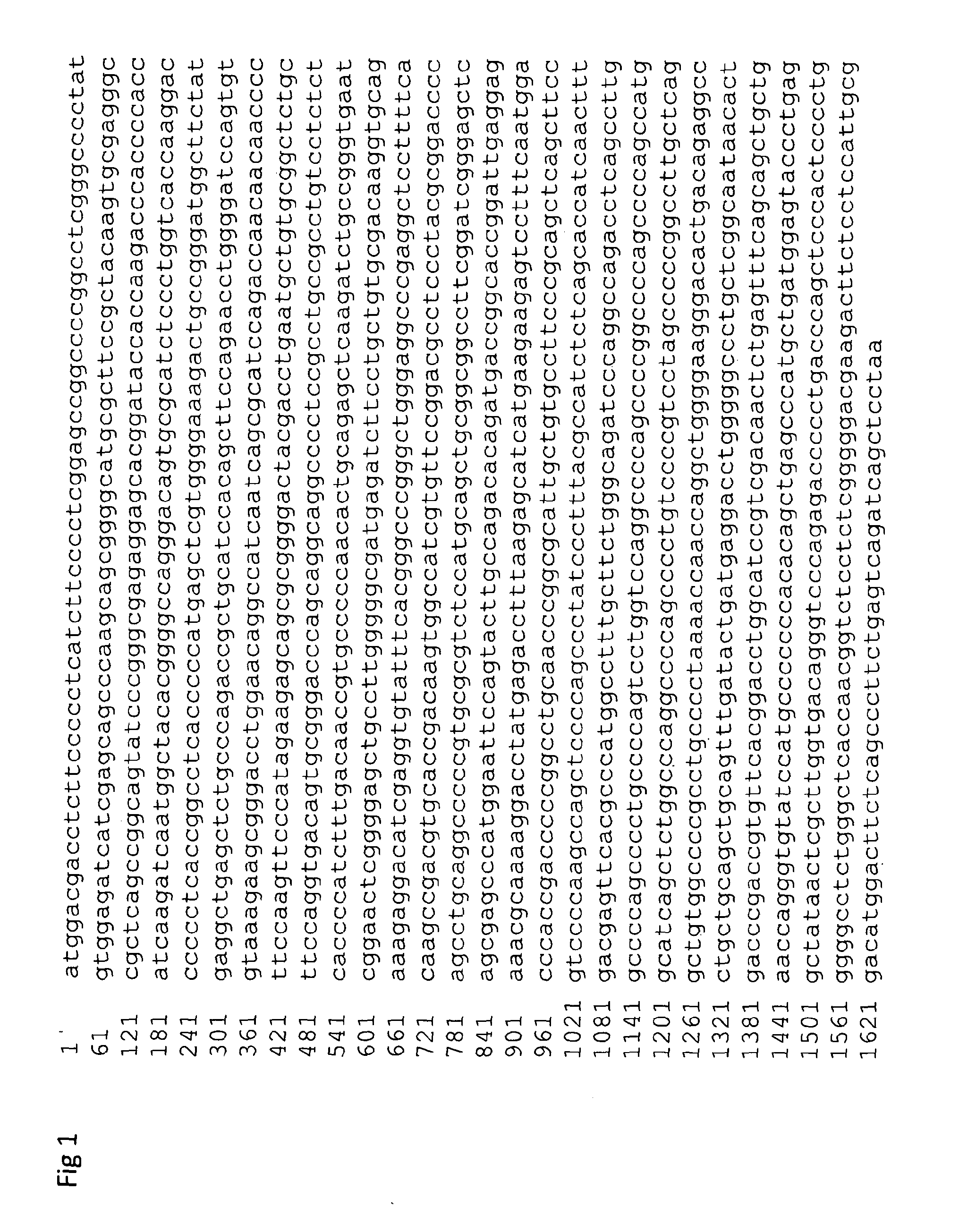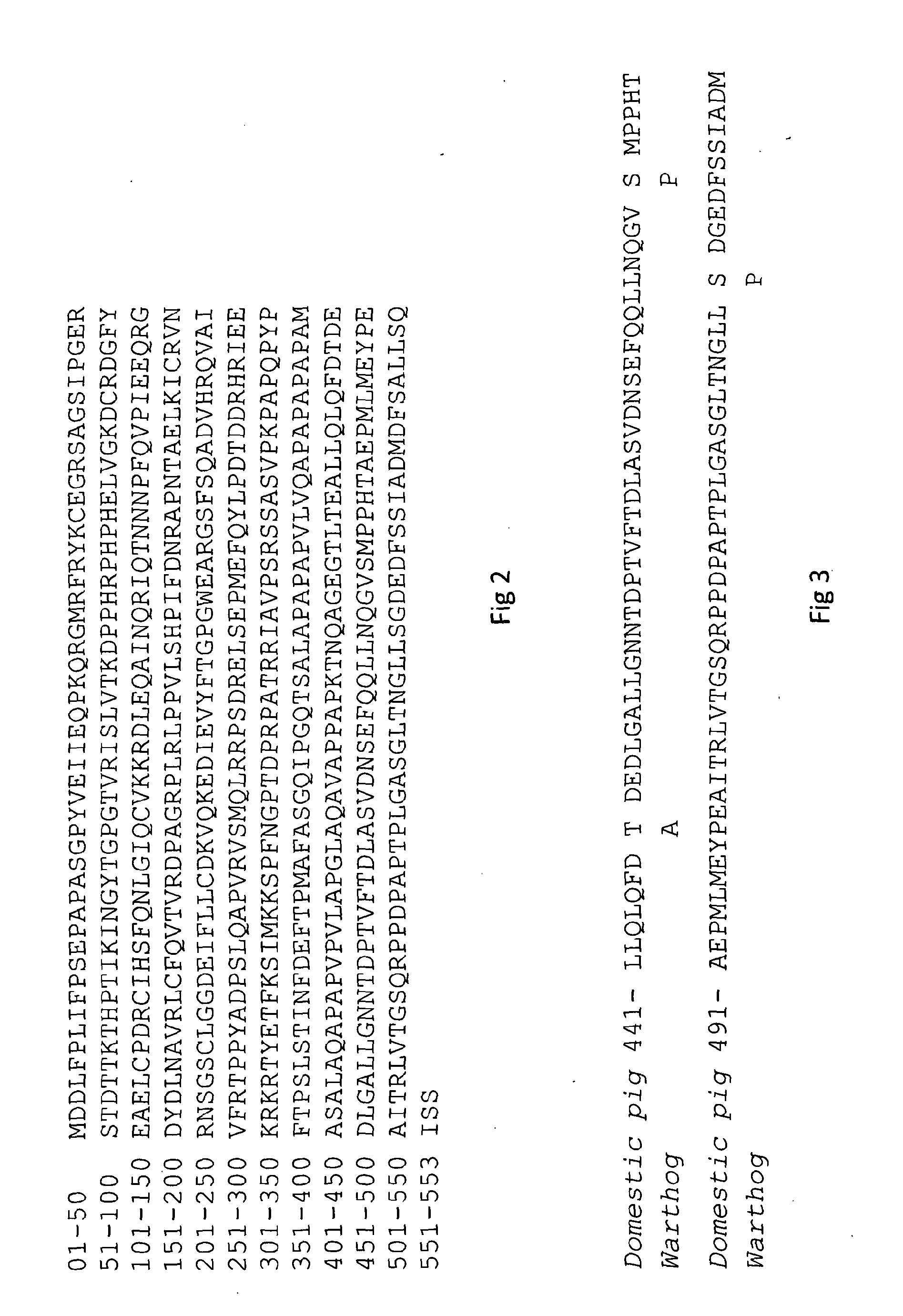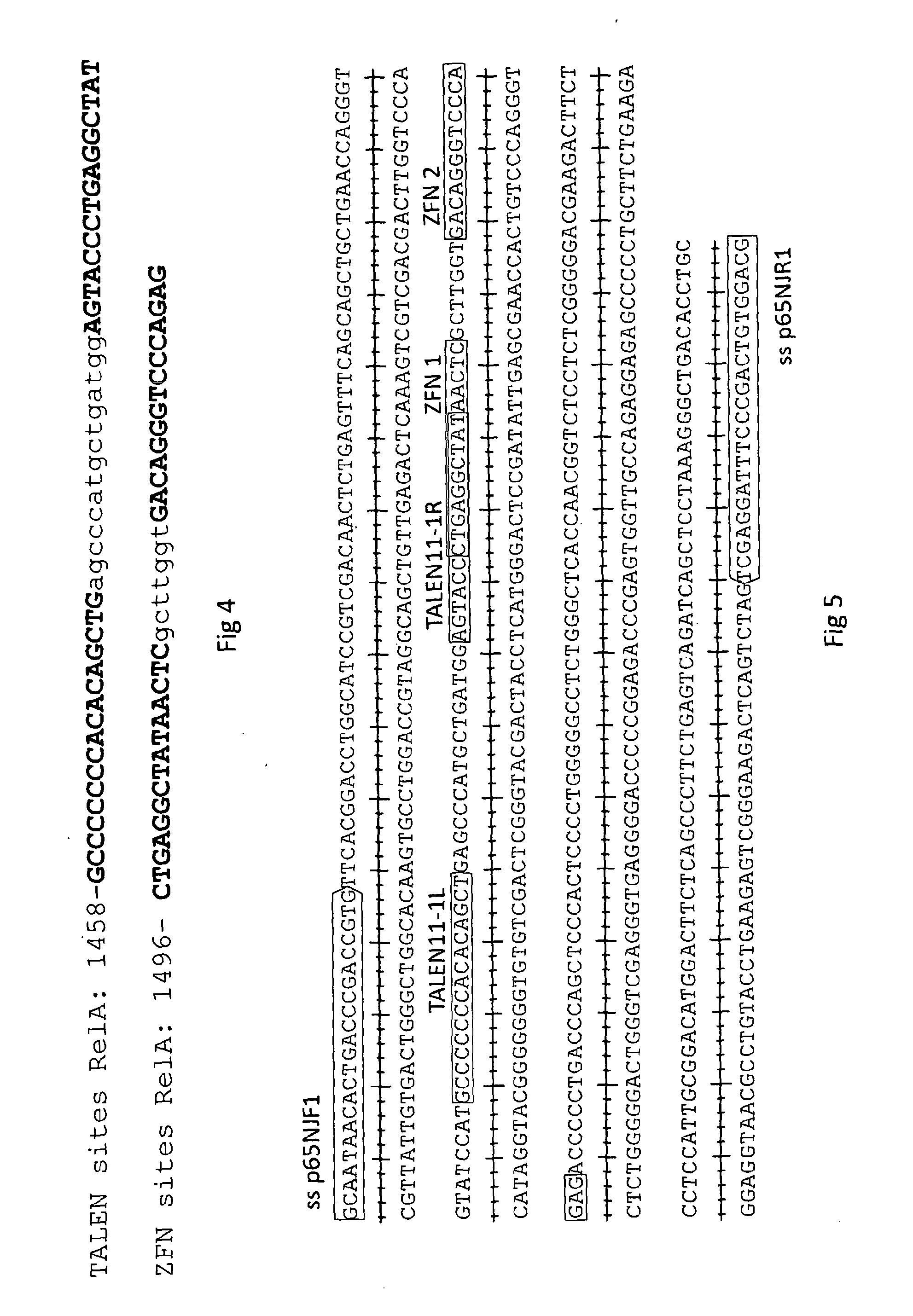Genetically Edited Animal
a technology of gene editing and animal, applied in the field of gene editing animals, can solve the problem that the animal is typically non-viable, and achieve the effect of rapid but transient expression of the nucleas
- Summary
- Abstract
- Description
- Claims
- Application Information
AI Technical Summary
Benefits of technology
Problems solved by technology
Method used
Image
Examples
example 1
Editor Design and Construction
[0116]Two types of editor were used: TALEN and ZFN. Both were designed to target the same region of porcine RELA gene.
[0117]TALEN: All TALENs were designed using the TALE-NT software and assembled using methods described in Cermaket al. (2011)—Nucl. Acids Res. (2011) 39 (12): e82. Briefly, intermediary arrays were produced for each TALEN pair that were compatible for Golden Gate cloning into pC-+63-TAL modified vector (although other vectors such as pC-+231-TAL, RCIscript-+231-TAL, pC-GoldyTALEN or RCIscript-GoldyTALENetc. could be used). Arrays were joined in the above vectors as follows; 150 ng each pFUS_A, pFUS_B, pLR-X and the desired backbone were mixed in a 20 μl digestion / ligation reaction including 50 units T4 DNA ligase (New England Biolabs) and 10 units Esp3I (Fermentas) in 1× T4 ligase buffer (New England Biolabs). The reaction was incubated in a thermocycler for 10 cycles of 5 min at 37° C. and 10 min at 16° C., then heated to 50° C. for 5 m...
example 2
Target Site Details
[0122]Target sites for the designed TALENs and ZFNs (FIGS. 4 and 5) are shown with reference to the nucleic acid numbering system of the RELA cDNA (as shown in FIG. 1), GenBank accession number NM—001114281; the TALEN target site is located between bases 1458 to 1505; the ZFN target site is located between bases 1496 to 1432. The full genomic Sus scofa genomic sequence NCBI Reference Sequence accession number is NC—010444 Assembly 10.2.
example 3
Production of Gene Edited Embryos
[0123]To establish the frequency of gene editing in pig embryos an in vitro embryo culture experiment was performed.
[0124]Pig ovaries were collected, washed with pre-warmed phosphate buffered saline at 38.5° C. and follicles aspirated. Oocytes were washed in TL HEPES PVA before culturing in maturation medium for 44 hours (22 hours plus hormones and 22 hours minus hormones; 38.5° C., 5% CO2), followed by gentle pipetting to remove cumulus cells and incubation with prepared sperm for 6 hours (38.5° C. in 5% CO2). Zygotes were transferred to NCSU-23 HEPES base medium and subjected to a single 2-10 pl cytoplasmic injection of mRNA at 2, 10 or 25 ng / μl. The 25 ng / μl mRNA sample consisted of 20 ng / μl of either a TALEN or ZFN pair mRNA and 5 ng / μl EGFP mRNA. The 10 and 2 ng / μl mRNA samples were dilutions of the 25 ng / μl sample. Zygotes were cultured in batches for 66 hours (embryo culture medium; 5% CO2, 38.5° C.), following which they were placed individua...
PUM
| Property | Measurement | Unit |
|---|---|---|
| Fraction | aaaaa | aaaaa |
| Stress optical coefficient | aaaaa | aaaaa |
Abstract
Description
Claims
Application Information
 Login to View More
Login to View More - R&D
- Intellectual Property
- Life Sciences
- Materials
- Tech Scout
- Unparalleled Data Quality
- Higher Quality Content
- 60% Fewer Hallucinations
Browse by: Latest US Patents, China's latest patents, Technical Efficacy Thesaurus, Application Domain, Technology Topic, Popular Technical Reports.
© 2025 PatSnap. All rights reserved.Legal|Privacy policy|Modern Slavery Act Transparency Statement|Sitemap|About US| Contact US: help@patsnap.com



